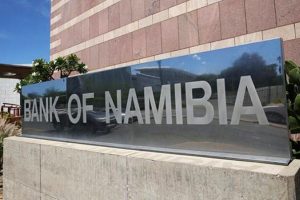
By: Hee-Dee Walenga
The deputy governor of the Bank of Namibia, Ebson Uanguta, emphasised the importance of the central bank creating an environment for Namibians to take advantage of green financing, saying that the reality of climate change, which induced prolonged drought, makes inclusive green financing critical for the country.
He highlighted this during a discussion amongst the Inclusive Green Financing Working Group (ICGFW) at the 2025 Alliance for Financial Inclusion (AFI) Global Policy Forum, currently taking place in Swakopmund.
Uanguta added that inclusive green financing is particularly important for Namibia due to the drought the nation has experienced over the years, and the “undeniable reality of climate change.”
He stated that rainfall patterns have become unreliable, citing the 2024 drought, which the Ministry of Agriculture deemed as the worst in a century, leading to a national state of emergency.
The World Bank has estimated that the recurring droughts have cost Namibia an estimated US$175 million annually and an approximate 4.1% contraction in its GDP. It also estimates that without effective adaptation measures, climate change could reduce Namibia’s GDP by as much as 6% annually. “It is a direct threat to national development, social and financial stability,” Uangata warned.
He further noted that the agriculture sector contributes around 7% to the GDP and that over 70% of the country directly and indirectly relies on agriculture for its livelihood. The sector is also the largest employer in the country.
The threat of climate change extends beyond the agricultural sector.
Between 2018 and 2023, loans to climate-exposed sectors, which include fishing, agriculture, mining, and real estate, increased from an estimated US$870 million to an estimated US$1.3 billion, which represents over 21% of loans advanced by Namibian banks.
This means that 1 in every 5 US dollars lent by Namibian banks goes to climate-exposed sectors, Uanguta revealed.
As a result, the Bank of Namibia introduced a policy framework, BID-39, designed specifically to provide credit relief to those impacted by the harsh climate changes.
The framework compels financial institutions to offer loan restructuring and emergency funding on favourable terms, to ensure that impacted borrowers are not forced into bankruptcy. BID-39 will remain in place until 2026.
“It is a statement of principle for us that financial systems must stand with the people they serve; in good times and in times of crisis. Economic resilience and financial stability are inseparable,” Uanguta expressed.
The sustainability framework released by the Bank of Namibia in 2024 compels financial institutions to consider climate risk in their business models and promote financial inclusion by ensuring that green finance reaches vulnerable communities.
In 2021, Bank Windhoek issued the country’s first sustainability bond, which raised N$227 million. In 2022, Standard Bank raised N$400 million via its green bond issuance. In the same year, RMB assisted FNB in raising N$353 million to support the Namibian green economy by funding green building and renewable energy projects.
In 2023, the Namibia Special Risks Insurance Association (NASRIA) launched a Weather Index-Based Livestock Insurance scheme, which provides farmers with protection against drought and flood losses.
Uanguta explained that the central bank learned via a study conducted in 2024 in the Kavango East, Omaheke, Kavango West, Hardap, Zambezi, and Kunene regions how inclusive green financing can foster economic resilience.
“We must develop a tailor-made financial instrument for climate risk insurance, concessional green goals, and sustainable agricultural financing that meets the realities of rural farmers,” Uanguta reiterated.
The study will be used to reform policy, shape regulation, and inspire innovation in product development.
Uanguta also revealed that in July, the central bank issued guidelines that require Namibian banks to disclose how they identify, manage, and mitigate climate risks, an important step in regulating how the institutions incorporate sustainability in their core strategies. The central bank itself will also begin disclosing information regarding its carbon footprint.
The ICGFW also discussed a previously developed framework to classify member nations in terms of Climate Risk Management for Vulnerable Groups, Funding for Inclusive Green Financing (IGF), and Provision of IGF Products & Services.
The group sent out a questionnaire, whose results placed each member country in the following
classifications for each theme: Emerging, Progressive, and Advancing.
Namibia was classed as progressive in the Climate Risk Management for Vulnerable Groups category and emerging for the IGF and Provision of IGF Products & Services themes.
The ICGFW, however, agreed to redo the questionnaire in order to better place each member nation. The consensus sentiment was that the initial form of assessment did not cater to the unique environments of each member nation.
New classifications will be released in December.









